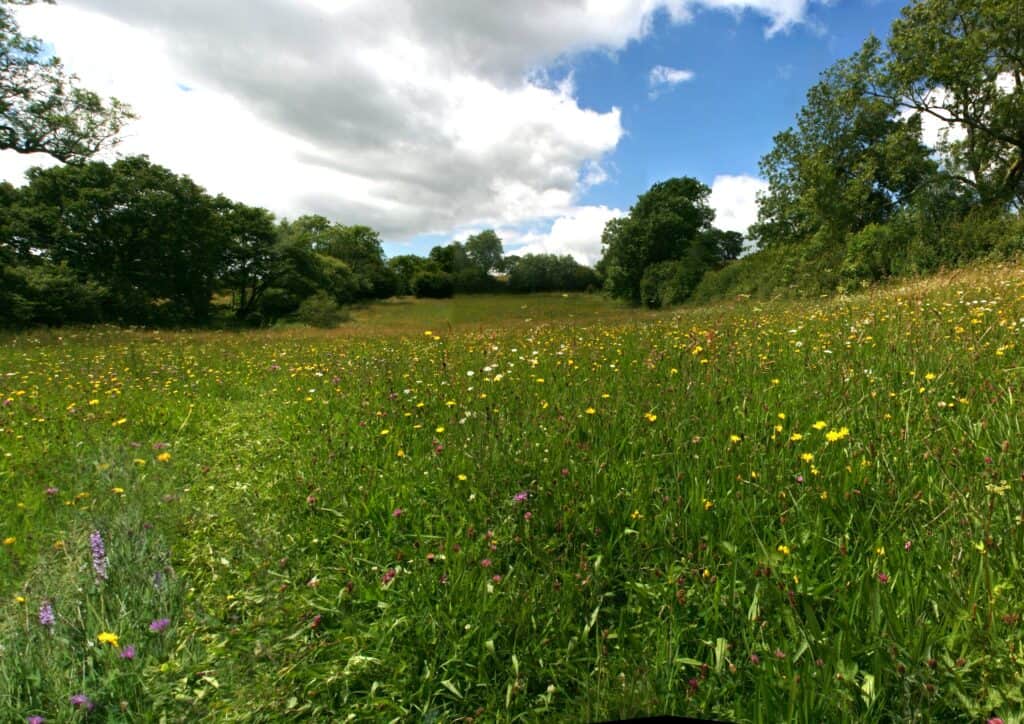The protected grasslands at Dorset Wildlife Trust’s Kingcombe Meadows may hold the key to new wildlife-rich corridors across Dorset

Image © Tony Bates
Set in the beautiful Hooke valley, Kingcombe Meadows is one of the finest examples of lowland meadows in the country, a rare mosaic of habitats which is open for visitors to explore. Dorset Wildlife Trust purchased the Kingcombe land at auction in 1987 following a national appeal to save ‘the farm that time forgot’. From 1917, the land had been farmed by two generations of farmers in the traditional way, resulting in an unspoilt landscape. Retaining its patchwork of meadows, thick hedgerows and ancient green lanes, the land teems with an abundance of wildlife.
Kingcombe’s diversity
The woodlands, wildflower meadows, ponds and streams of Kingcombe Meadows are home to some of the rarest plants and animals in the UK. Yellowhammers and linnets make their home here and the ancient trees drip with lichens. The chalk slopes burst with spring cowslips, harebells and bee orchids while many species of waxcap fungi can be found in the acid grasslands. In summer, clouds of marbled white, meadow brown and ringlet butterflies can be seen.
Common today … rare tomorrow.
We have lost, at a conservative estimate, more than before 97 per cent of the UK’s species-rich grassland in less than a century. An estimated 3,000 miles of hedgerows were destroyed each year between 1946 and 1963. Species like the grey long-eared bat, water vole and marsh fritillary butterfly are already on the verge of disappearing forever. Common wildlife like blue-tits, bumblebees and grasshoppers, plants and trees like bluebells and oaks could be next. Making more space for nature is the key to reversing these declines.
Wildlife corridors
Wildlife needs the chance to breed, feed and move freely beyond the boundaries of nature reserves. Part of Dorset Wildlife Trust’s strategy to create a Wilder Dorset by 2030 is to establish Nature Recovery Networks on land and sea. Together with local landowners, farmers and communities, the trust is working across 5,000 hectares to establish an ambitious nature recovery programme to enable Kingcombe’s wild energy to spread out through wildlife-rich corridors across Dorset. By replanting hedgerows, managing ponds and allowing billions of seeds from wildflower meadows to spread and grow, mammals, insects, amphibians and plants can thrive again and the landscape can recover … a win-win for nature and for humanity. As the President of The Wildlife Trusts, Sir David Attenborough said, “Everything works better when it’s connected.”
To find out about Dorset Wildlife Trust’s trailblazing Kingcombe’s Wild Energy project and how you can help reconnect nature, visit dorsetwildlifetrust.org.uk/WildEnergy
You may enjoy our Dorset walk which begins at the DWT Kingcombe Centre. It’s easy to just enjoy the first section through the Meadows themselves. The whole route is 13 miles, and one of our favourite, most beautiful walks – and don’t take our word for it, it gets 5* reviews too



